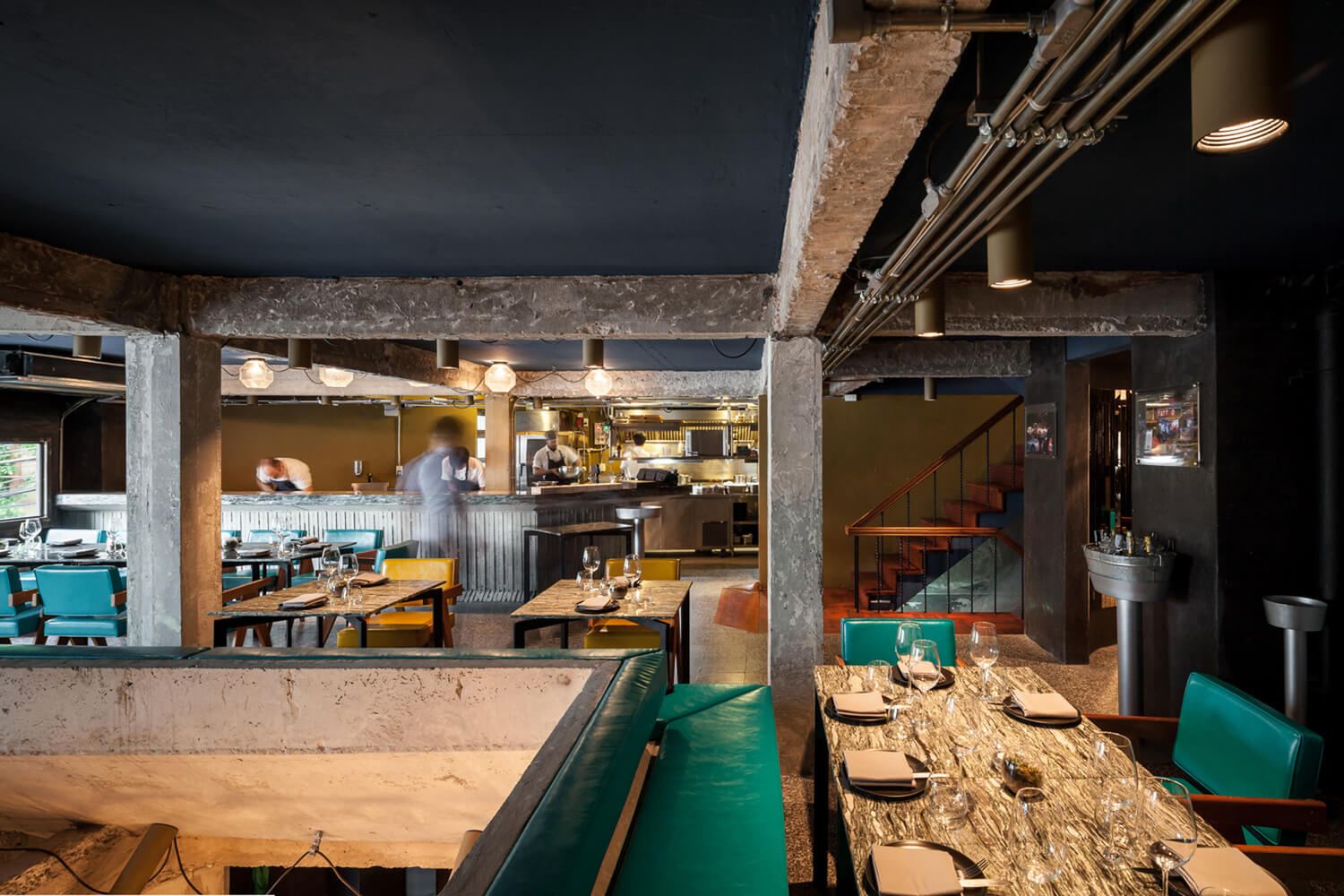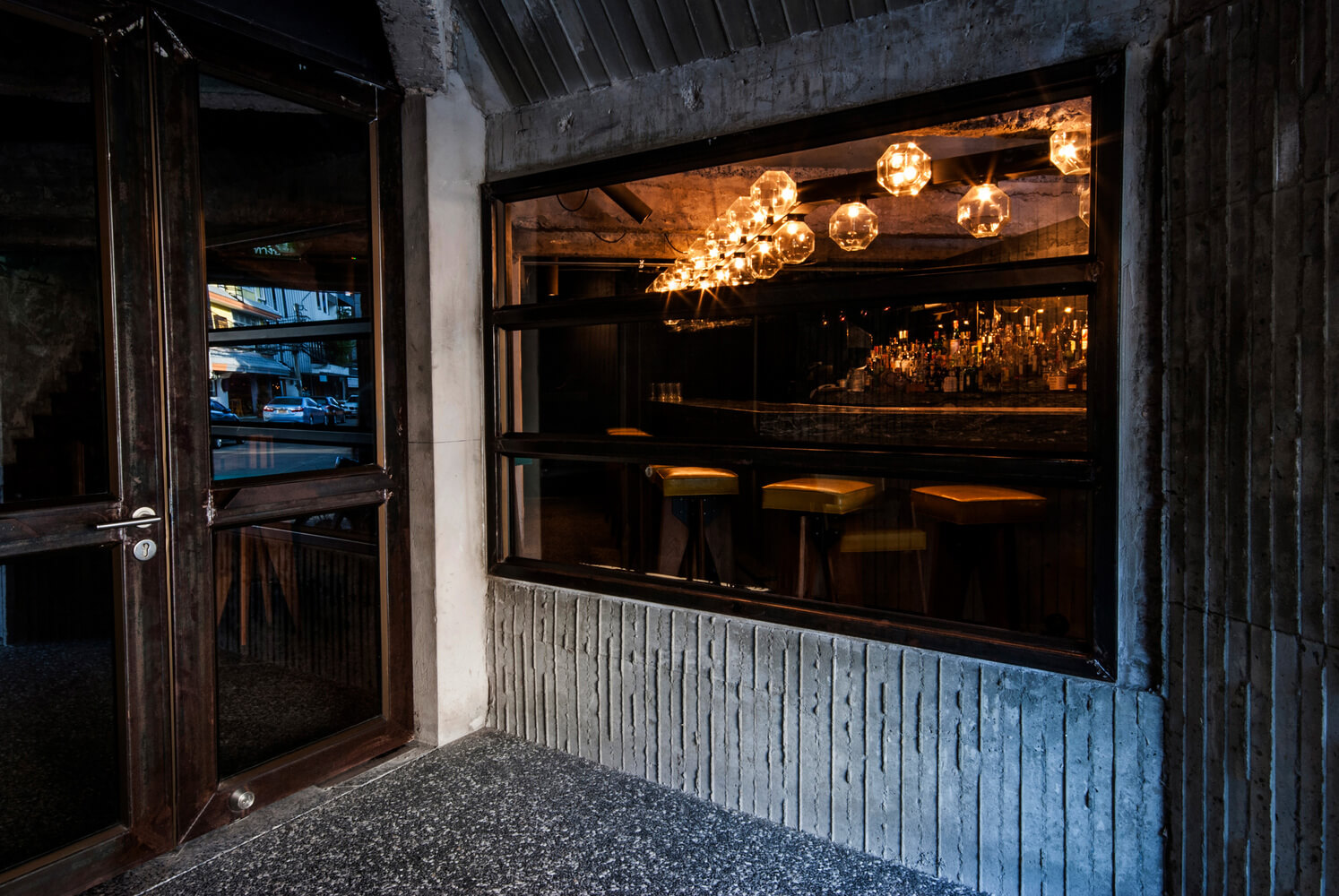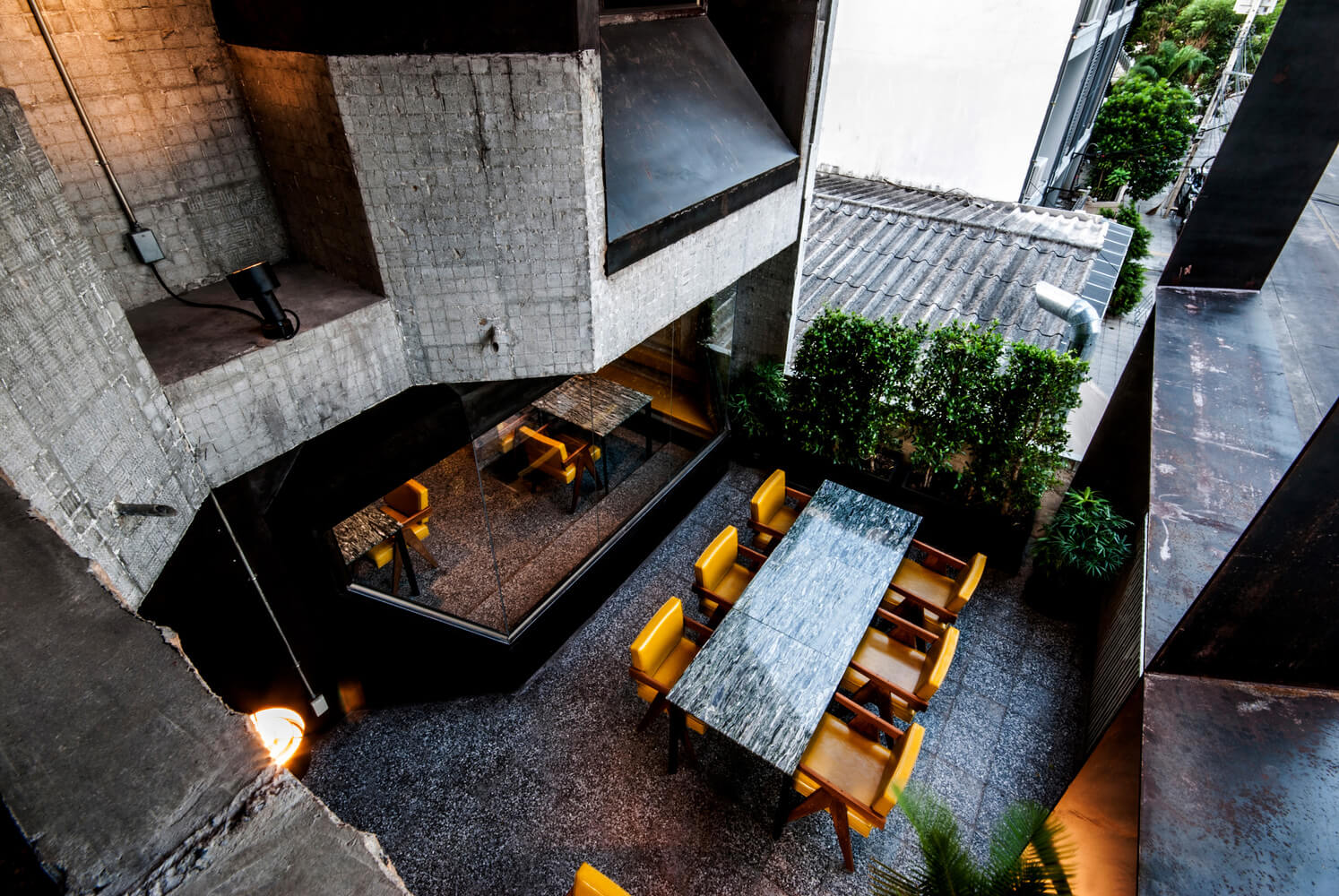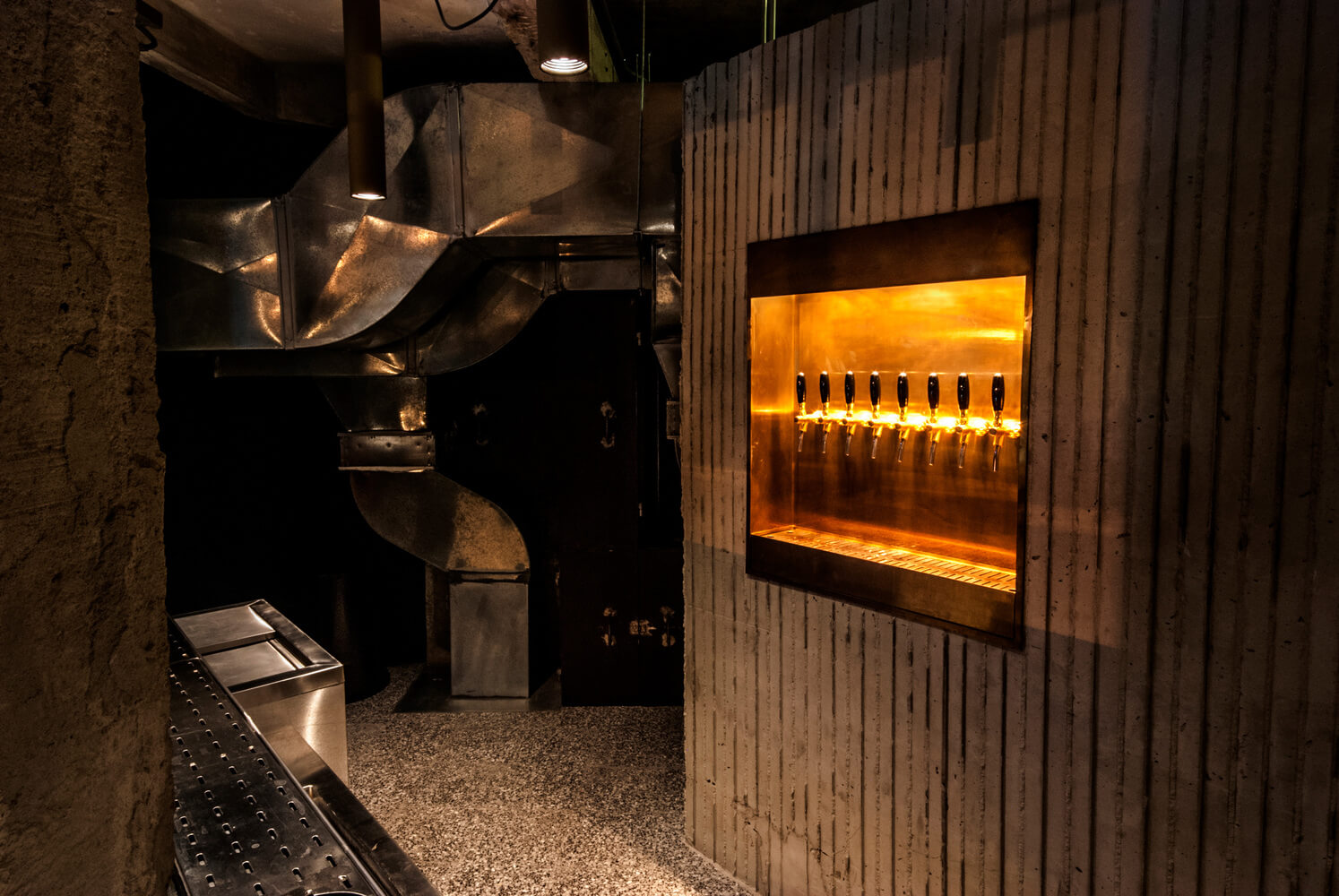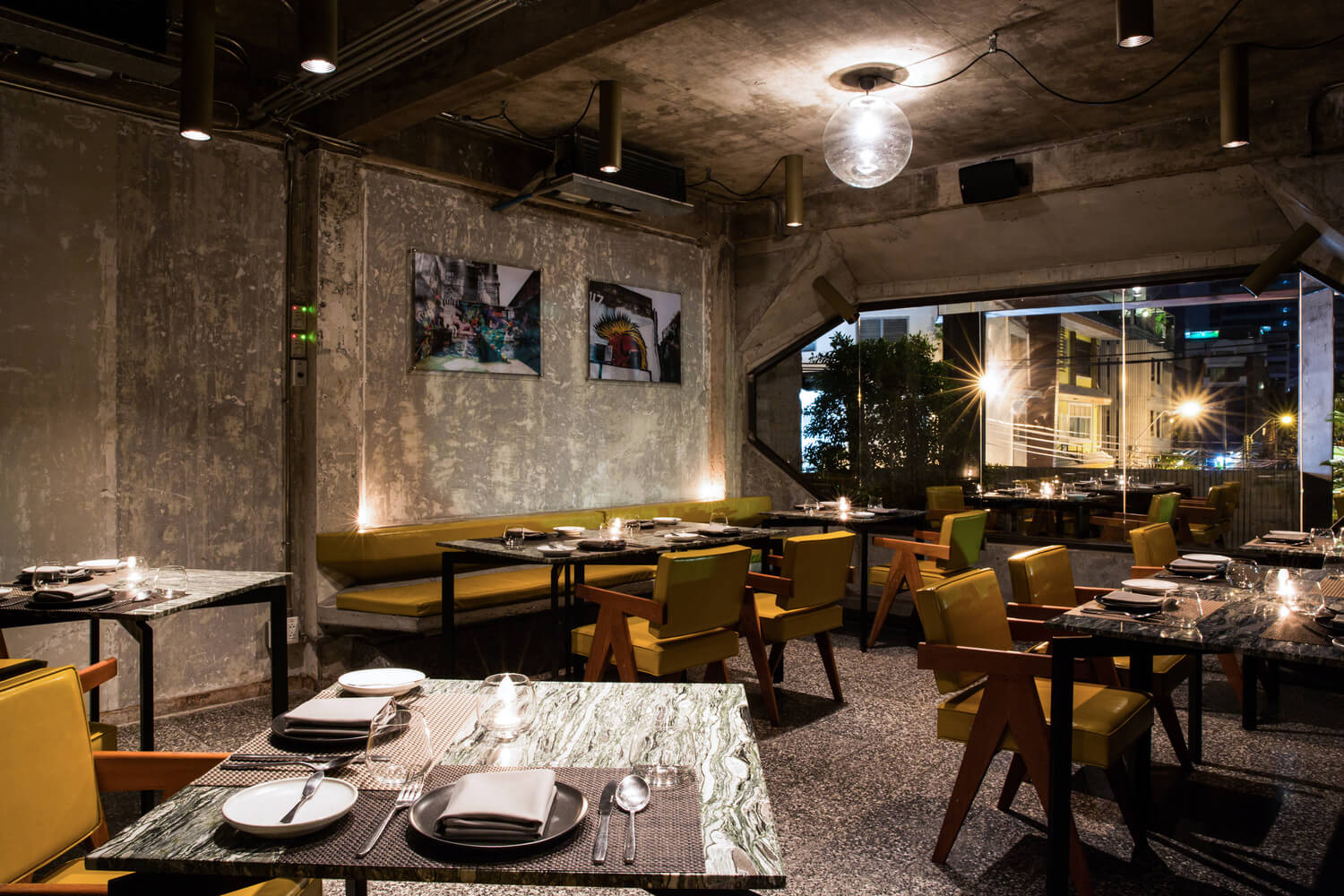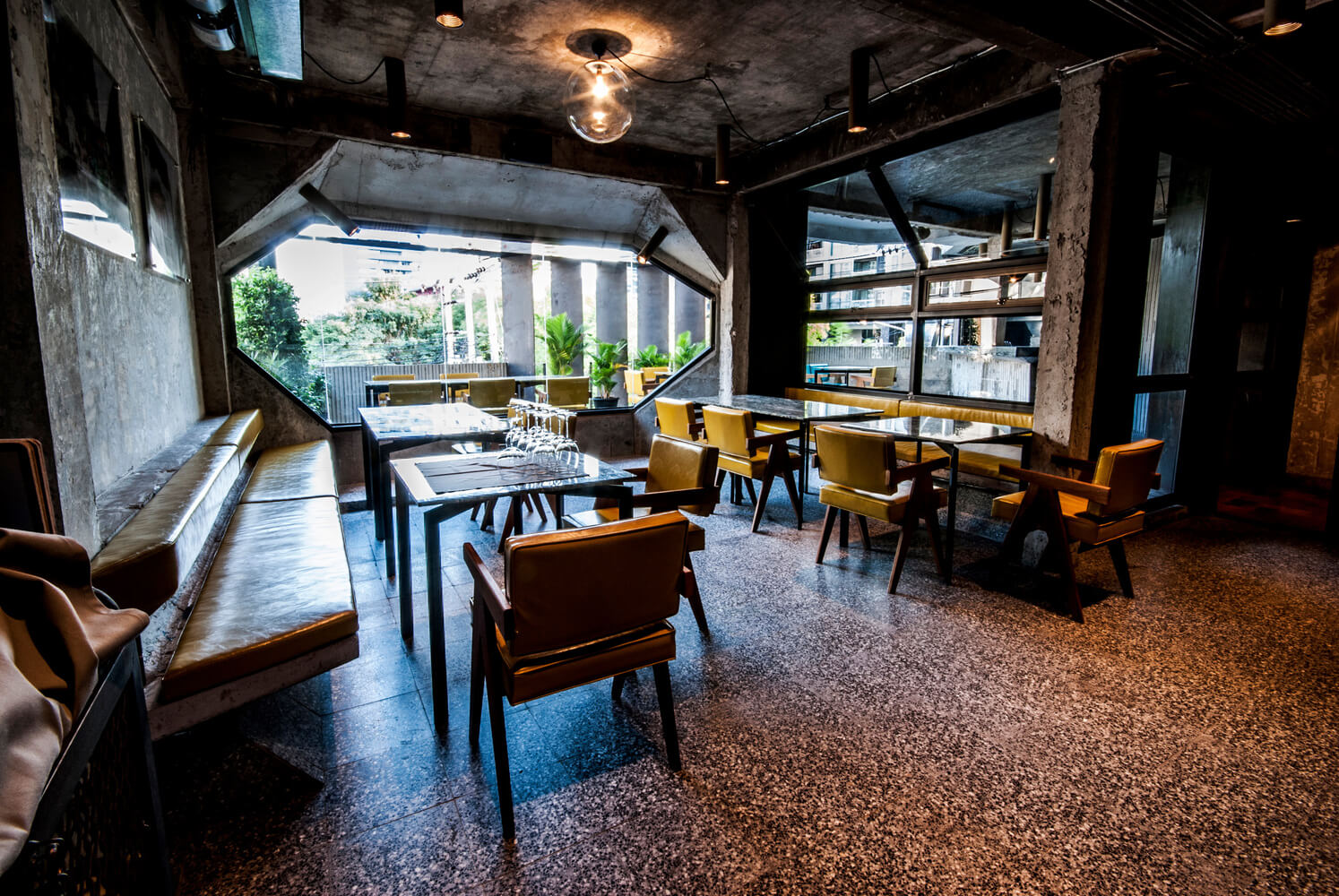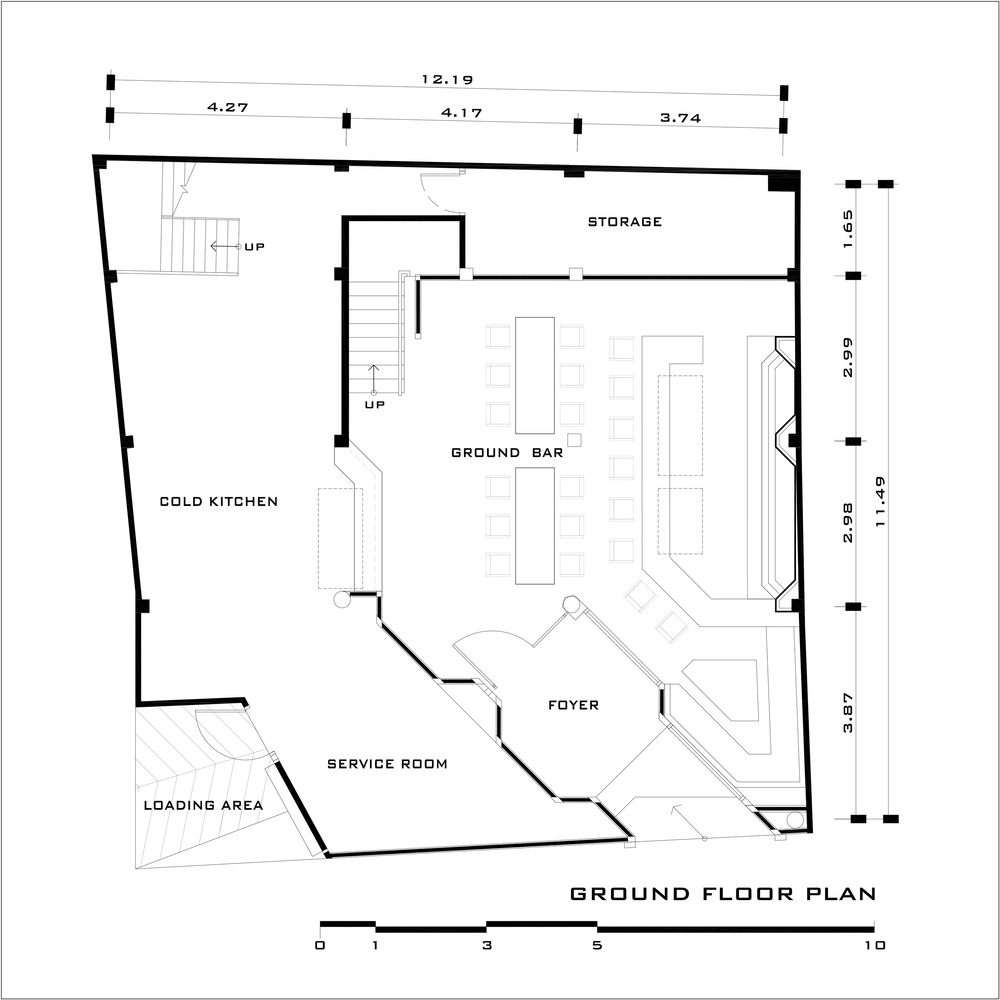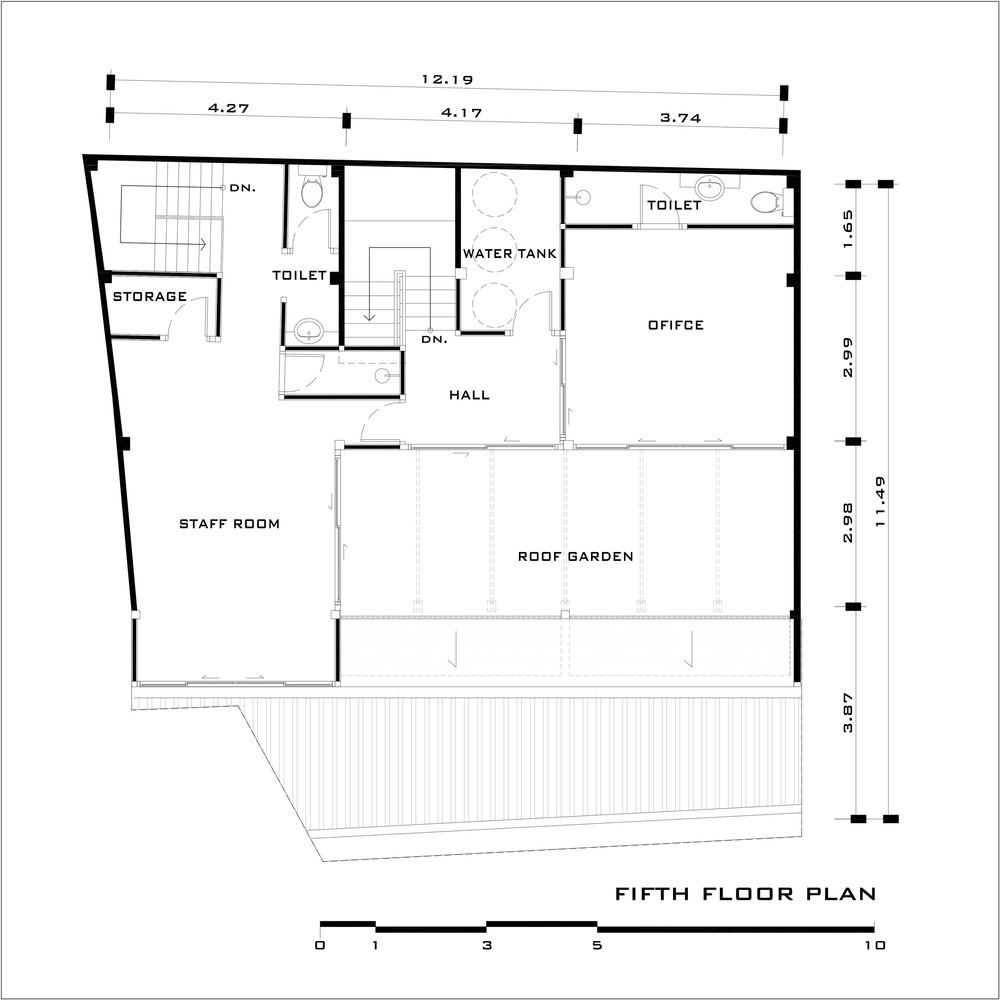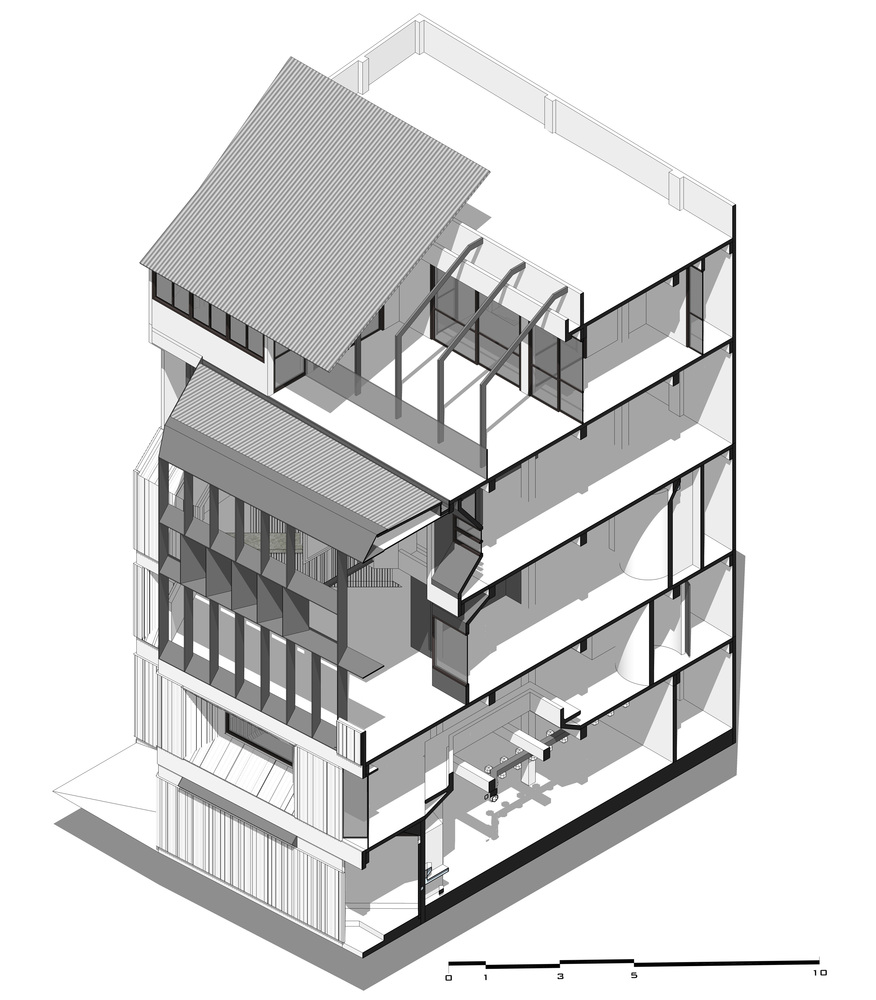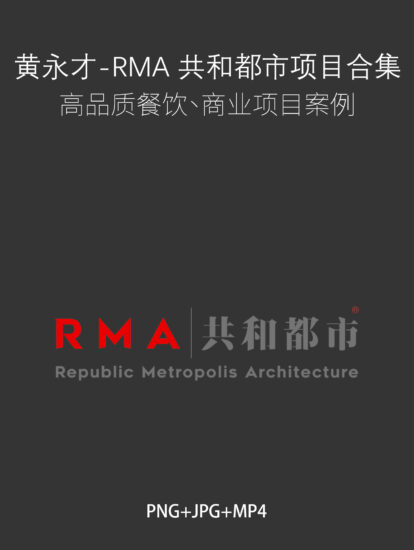項目位於曼穀Sathorn區一個廢棄的五層混凝土商鋪內。業主和廚師想要一個能夠反映廢棄空間內彈出事件敏感性的場所,以及一個開放式廚房,使廚師能夠直接與顧客交流。
The project is in what was a derelict five-level triple wide concrete shophouse in the Sathorn district of Bangkok. The project brief set by the owners and chef required a venue that would reflect the sensibility of a pop-up event within a derelict space, and an open kitchen enabling the chef to engage directly with customers.
提供可持續性和多元文化食品的菜單,營造屋頂花園的可種植空間也是必備條件。由於該建築物位於街道盡頭並且居中,因此必須確保客人的隱私感。我們修改現有結構,為了避免設計看起來過新,取而代之的是設計一些可以融進廢棄背景中的東西。
With a menu focused on sustainability and multicultural food, a space to cultivate a rooftop garden was also a prerequisite. As the structure sits open and centered at the end of a street, it was essential to ensure a sense of privacy for the guests. Our approach for modifying the existing structure was to avoid a design that looked new and fresh, but instead to design something which created a dated and derelict backdrop.
內部的立麵風格參考了20世紀後期泰國的混凝土市政建築和銀行,這種風格在今天被認為是過時的,並且在當地不受歡迎。這種在泰國常被人忽視但又令人回味的粗野主義風格,幫助我們正式確定了餐廳整體的框架。
The façade and movement within the interior make reference to Thailand’s concrete municipal buildings and banks from the latter decades of the 20th century – a style now considered obsolete and out of favor in the country’s communities. This evocative form of Brutalism, specifically Thai and often overlooked, helped us formalize the framing of the restaurant.
所有材料,飾麵和配件的選擇也基於這種過時廢棄感。鏡子和燈具是在當地采購的滯銷商品。 餐椅是Pierre Jeanneret原始設計的改良版本,最初用於印度昌迪加爾的公務員。外立麵采用現澆混凝土,並添加了增加混凝土老舊質感的顏料。上層的鋼結構是在當地的泰國造船廠生產的。
The choice of all materials, finishes and fittings was also based on this obsolescence. Mirrors and light fittings were old dead stock sourced locally. The dining chair is a modified version of a chair by Pierre Jeanneret originally designed for use by civil servants in Chandigarh, India. The façade is constructed with pour in place concrete with pigments added for the look of age. The upper sections in steel were fabricated at a local Thai shipbuilder’s factory.
首層設有冷食廚房,接待站和主酒吧,可容納28位客人。天花板的一部分被移除,以便與二樓用餐區的客人互動,強調兩個區域之間的連通感,並從上方提供補充照明。
The ground floor houses the cold kitchen, receiving station and main bar with seating for 28 guests. A section of the ceiling was removed to allow interaction with guests on the second level dining space – accentuating a sense of connectivity between the two zones and providing supplementary lighting from above.
為了模擬破損老化的外觀,現有的水泥飾麵從選定的柱子,橫梁和牆壁上部分移除,留下碎裂破敗的質感。整個建築內的水磨石瓷磚地板同樣給人一種頹廢感。用餐區分為兩層,二樓餐廳可容納23位客人,在開放式廚房旁邊設有台麵座位,桌子環繞著夾層天井,俯瞰首層的主酒吧。
To create a worn and deteriorated look, existing cement finishes were removed from selected columns, beams and walls, leaving them chipped and battered. The terrazzo tiled flooring throughout the building was similarly made to look fatigued and worn. The dining areas are split onto two levels. The second level dining room seats 23 guests with countertop seating adjacent the open hot kitchen, and tables wrapping around the mezzanine overlooking the main bar on the ground floor.
三樓為18位客人提供室內用餐區,為另外22位客人提供戶外用餐區,還設有一間專門供應葡萄酒和小啤酒的戶外酒吧。四樓設有一個懸挑的戶外吸煙區和私人儲物區。 五樓設有員工區,辦公室和屋頂花園,供應新鮮的香草和蔬菜。工作人員可以通過後台樓梯進入餐廳的所有樓層。
The third level has indoor dining for 18 guests, an outdoor dining area for another 22 guests, and an outdoor bar specializing in wines and microbrew beers. The fourth level features a cantilevered outdoor smoking area for guests, and private storage areas. The fifth level holds the staff area, offices and a rooftop garden for fresh herbs and greens. All levels of the restaurant can be accessed by the staff via a back-service staircase.
完整項目信息
項目名稱:Bunker
項目位置:泰國曼穀
項目類型:餐飲空間/獨棟餐廳
完成時間:2016
項目麵積:555平方米
設計公司:Lump
攝影:Art4d Magazine, Ketsiree Wongwan, Lump Co, Kan Ongwat




